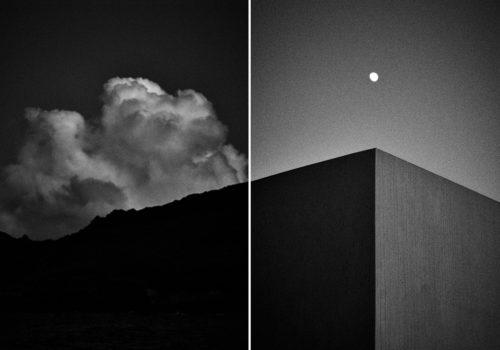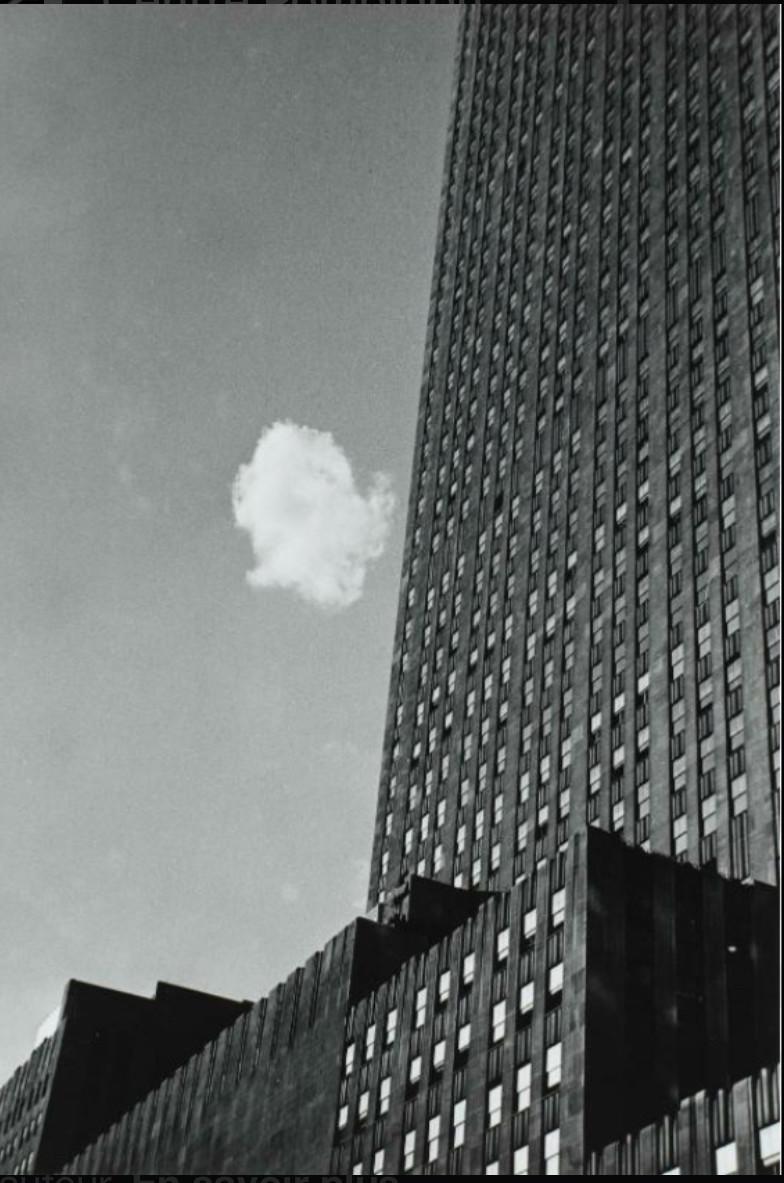Benjamin Didier … All about poetry.
Benjamin Didier is a contemporary photographer known for his distinctive approach to the medium. His work often explores themes of memory, perception, and the interplay between light and shadow. His photographs are characterized by a poetic quality, where simplicity meets depth, and each image invites viewers to contemplate beyond the surface. He often utilizes unconventional techniques, such as pinhole photography, to create images that challenge traditional notions of sharpness and depth, emphasizing the overall impression rather than specific details.
Influenced by iconic photographers like André Kertész, he values sincerity in art and believes that the essence of a good photograph lies in its authenticity. He doesn’t subscribe to the idea of a “perfect” image, preferring instead to embrace uncertainty and spontaneity as driving forces in his creative process.
His work has been showcased in various exhibitions in France and abroad, including an upcoming show at the Art Therapy Gallery in Paros, Greece. With a deep appreciation for both natural light and the tactile experience of printed photographs, Benjamin Didier continues to push the boundaries of contemporary photography, merging his love for the physicality of images with his passion for storytelling.
Your first photographic spark?
Benjamin Didier: When I grabbed my mother’s camera around the age of 7 or 8, a Minox at the time, because I was tired of her constantly taking pictures of me. And I have to admit that I quickly got into the game. The idea of creating images made me shiver. It also corresponded to my geeky side. But it wasn’t until after I turned 30 that I decided to make it my profession.
The visual artist who inspires you?
Benjamin Didier: There are several, but first and foremost, I would say André Kertész. I love the apparent simplicity of his images, as well as his boldness, because he experimented a lot. In some ways, I see myself in his work.
The image you wish you had taken?
Benjamin Didier: I’m still dreaming of it, it’s yet to come.
The one that moved you the most?
Benjamin Didier: It’s an image of a small cloud next to a New York City building. It was taken by Kertész. It touches me because it is simple and full of poetry.
And the one that made you angry?
Benjamin Didier: More than a specific image, it’s a photo made to please, and therefore lacking sincerity, that makes me angry.
The quality needed to be a good photographer?
Benjamin Didier: Sincerity, which is essential in all arts.
The secret to the perfect image, if it exists?
Benjamin Didier: I don’t believe in the perfect image, and even if such a secret existed, the day I discover it, I would stop photography immediately. Uncertainty is my creative engine.
Which photo, in your opinion, changed the world?
Benjamin Didier: Without hesitation, the first photo, taken by Nicéphore Niepce.
And which photo changed your world?
Benjamin Didier: Paradoxically, and I’m no stranger to paradoxes, it’s a painting by Van Gogh (his bedroom in Arles) that had a true aesthetic impact on me as a child. I was literally captivated by that work.
What interests you most in an image?
Benjamin Didier: The subject is secondary to me, as I don’t set particular limits for myself, even if I have some preferences in constructing my photographs (using pinhole cameras, visual play with diptychs…). In the end, it’s the physical sensation that a print evokes that matters most to me.
What was the last photo you took?
Benjamin Didier: A pinhole photo. I love placing a perforated protective cap instead of a lens; it expresses the in-between: no depth-of-field effect, no sharpness… It retains an overall impression, much like memory for those, like me, who don’t have what’s called a photographic memory.
A photographic memory from your childhood?
Benjamin Didier: No specific photograph, but when my father finally gave me his camera, and I went to photograph the recently scorched forest surrounding us during my vacation, the subject may seem gloomy, but that day I believe I understood that photography is more about using your “heart,” whether happy or broken like that day, than just your eyes.
A key image in your personal pantheon?
Benjamin Didier: It’s not necessarily my favorite photo, but it’s the one that sparked the idea for a particular process that is part of, among other things, my new series “The Shape of Water.”
An essential photography book?
Benjamin Didier: Ralph Gibson’s Trilogy, this photographer is a pure genius.
Your first camera?
Benjamin Didier: A Minolta 7000, with which I took my first real photos.
What do you use today?
Benjamin Didier: Leica M10 Monochrom.
Your favorite drug?
Benjamin Didier: Photography, of course! There’s nothing more rewarding than seeing a photo materialize on paper.
The best way for you to disconnect?
Benjamin Didier: Kite surfing, because it connects me directly with nature’s elements.
Your greatest quality?
Benjamin Didier: Enthusiasm.
An image for a new banknote?
Benjamin Didier: That’s a question that doesn’t inspire any answer for me.
A job you would never want to do?
Benjamin Didier: Accountant.
Your biggest extravagance as a photographer?
Benjamin Didier: The photographic process I developed for my new series, which materializes my fantasy of the third dimension in photography.
The values you wish to share through your images?
Benjamin Didier: I believe the role of an artist is to make propositions, to question… Sharing values is already giving answers, and I don’t have that ambition with my photography.
The city, country, or culture you dream of discovering?
Benjamin Didier: I’ve always been drawn to wide open spaces because I love how the elements express themselves in those places. I had the chance to travel through Patagonia about ten years ago, but I’ve long dreamed of Mongolia.
The place you never tire of?
Benjamin Didier: The Cyclades in Greece.
Your biggest regret?
Benjamin Didier: It seems too early to have one.
Instagram, TikTok, or Twitter?
Benjamin Didier: Instagram is like a notebook for me. It’s also a communication tool. But I’m not comfortable with this kind of platform because, overall, I think looking at a screen removes the essence of what photography really is. It’s difficult to appreciate an image’s true value that way; I love photography through its physical dimension— the choice of process, paper, and image size are inseparable in my work.
What is your relationship with images?
Benjamin Didier: I have a sensual/physical relationship with photography. I still have that inner child who wants to touch the works with his hands in a museum, even though you’re only allowed to “touch” with your eyes. This prohibition became a powerful creative drive, even though I chose to express myself through photography, which by nature is two-dimensional… yet another paradox!
Color or black and white?
Benjamin Didier: For the past few years, I’ve worked exclusively in black and white; it’s the ideal mode of expression for conveying shadow and light, forms, and material, besides being straightforward. I love color, but as an information layer, it really has to add something.
Daylight or artificial light?
Benjamin Didier: Natural light, without hesitation, whether day or night, especially moonlight.
The most photogenic city, in your opinion?
Benjamin Didier: I love Italy in general, and I’ve had a strong fondness for Rome, to which I devoted an entire subject. In my eyes, it’s the cradle of our Western aesthetic.
If God existed, would you ask Him to pose for you or opt for a selfie with Him?
Benjamin Didier: I’m far too modest to ask for a selfie, and I hate showing off. But at the same time, isn’t it said that God is all and in everything? So, if He exists, I’m probably photographing a bit of Him here and there!
The image that represents the current state of the world for you?
Benjamin Didier: I would say the cover photo of Joel Meyerowitz’s book “Aftermath” on the aftermath of September 11, 2001… the destruction of a world, but not the end of the world; despite everything, I’m an incurable optimist.
News:
- Exhibition at Art Therapy Gallery in Paros, Greece, from September 6 to 15, 2024, arttherapyparos.com
- Documentary: https://www.tv5mondeplus.com/fr/culture-et-art-de-vivre/vie-culturelle-et-artistique/terra-artistika-sai-e6/play
Website: www.benjamindidier.com
Instagram: benjaminddb
Represented by Galerie Wilo & Grove in Paris: https://www.wilo-grove.com

















